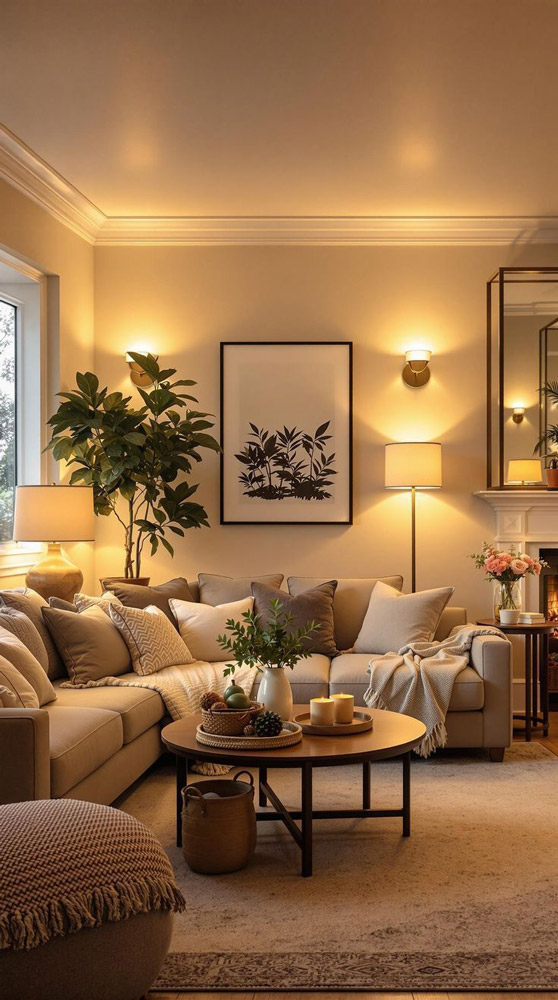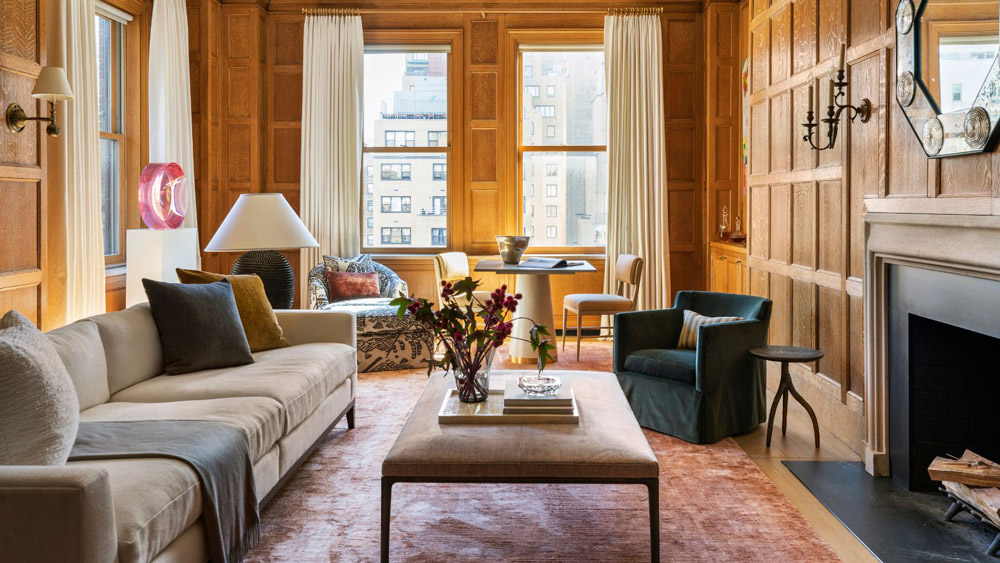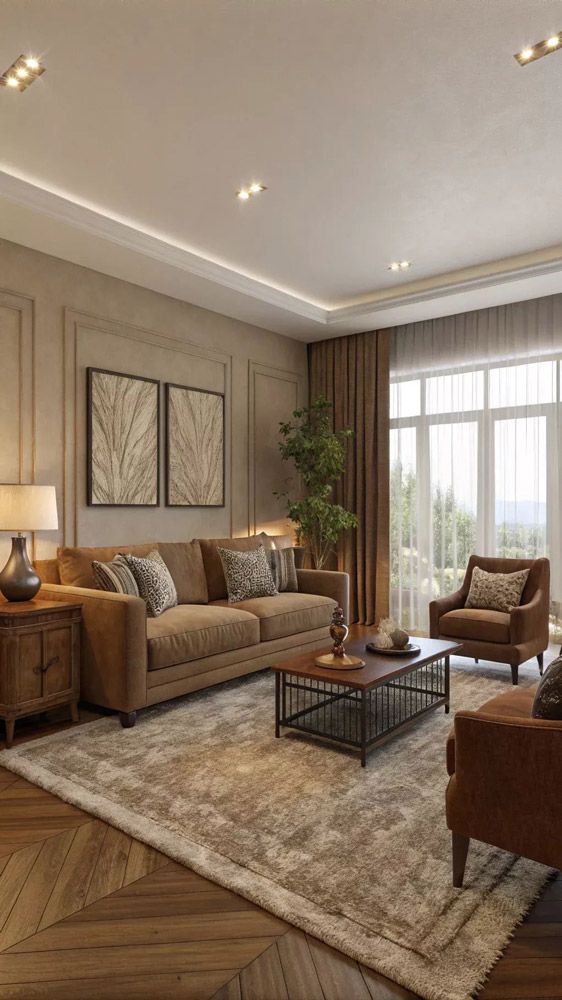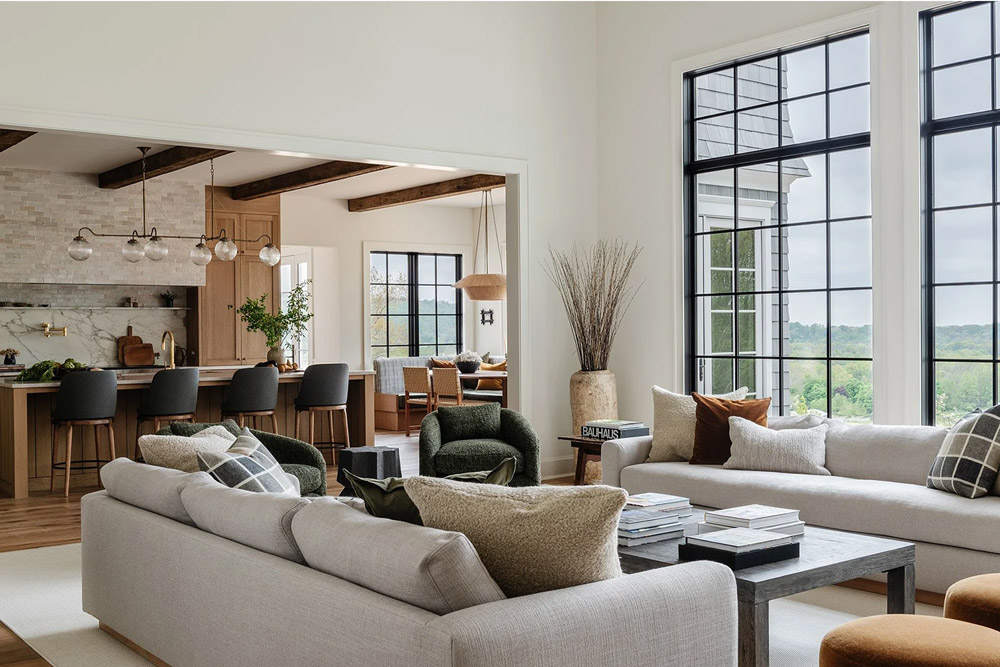Texture is one of the most underappreciated tools in interior design, yet it’s often the secret behind those warm, rich, and visually dynamic spaces that feel effortlessly inviting. While color and layout often get most of the attention, texture plays a crucial role in how a room feels—both visually and physically. Layering textures strategically can transform a flat or sterile environment into one that exudes depth, personality, and warmth.
In this guide, we’ll explore how to use texture effectively in your home, the principles behind good texture layering, and practical ways to apply it across different rooms and styles.
Contents
Understanding Texture in Interior Design
Texture refers to both the tactile and visual quality of a surface. Tactile texture is what you can physically feel—like the softness of a velvet cushion or the rough grain of reclaimed wood. Visual texture, on the other hand, is how a material appears to feel, even if it’s not touched—for instance, a high-gloss tile might look slick and cold, while a matte wall finish might look soft and warm.
Both types of texture are important. When layered intentionally, they add contrast, depth, and dimension to a space. More importantly, texture evokes emotion. A room layered with soft textiles, raw wood, and plush rugs invites comfort, while sleek glass, metal, and high-shine finishes suggest sophistication and luxury.

The Principles of Texture Layering
The key to effective texture layering lies in balance and contrast. You want to avoid overloading a room with too many competing textures or overwhelming a space with one type. Here are the core principles to follow:
1. Balance and Moderation
Every room should have a mix of smooth and rough, soft and hard, matte and shiny textures. But balance is essential. Overuse of any one texture can create monotony or visual chaos.
2. Contrast Creates Interest
Contrast is where texture really shines. Pairing opposites—like a soft faux fur throw on a leather sofa, or a coarse jute rug against a polished hardwood floor—creates dynamic tension and draws the eye.
3. Repetition and Rhythm
While contrast is important, repeating a few textures throughout the space helps create a sense of rhythm and cohesion. A boucle fabric might appear on a chair, then again on a throw pillow in another corner.
4. Lighting Matters
Different textures reflect and absorb light in unique ways. Glossy surfaces bounce light, making a space feel brighter, while matte finishes absorb light and create a softer, more muted ambiance. Consider how natural and artificial light interact with your chosen textures.
Key Elements to Layer for Warmth and Richness

Textiles and Soft Furnishings
Textiles are the most immediate way to introduce texture. Rugs, throw pillows, curtains, and blankets are easy to layer and swap seasonally. Combine fabrics like velvet, linen, wool, and cotton for a balanced, tactile mix. For example, a chunky knit throw over a crisp linen duvet instantly adds depth and coziness.
Furniture Finishes
Furniture pieces are another key opportunity to layer texture. Upholstered chairs, leather sofas, natural wood tables, and metal legs each bring a unique textural profile. Try mixing smooth leather with nubby woven fabrics or raw wood with lacquered surfaces for compelling contrast.
Wall Treatments and Paint Finishes
Walls are often overlooked when it comes to texture, but they offer a large canvas to build richness. Consider textured wallpaper, shiplap, limewash, or even raw plaster to add subtle interest. Matte paint creates a soft, velvety look, while gloss finishes can add polish and reflectivity.
Decorative Accents and Accessories
Smaller accents also play a big role. Woven baskets, ceramic vases, brushed brass candle holders, and glass lamps all add layers of tactile and visual variety. Mixing organic materials—like stone, terracotta, or wood—with refined ones like glass or polished metal creates a curated, luxurious look.
Room-by-Room Texture Layering Tips

Living Room
The living room should feel welcoming and lived-in. Layer a high-pile area rug over hardwood floors, add plush pillows in different fabrics, and use textured throws. Mix leather, wool, and wood for a rich yet cozy palette.
Bedroom
Texture in the bedroom should evoke comfort and rest. Start with layered bedding—linen sheets, a quilted coverlet, and a faux fur or chunky knit throw. Add a soft rug underfoot and velvet or fabric-covered headboards for added softness.
Kitchen and Dining
Though often dominated by hard surfaces, the kitchen benefits from softer touches. Incorporate textured bar stools, wooden cutting boards, ceramic dishware, or linen runners. In dining rooms, upholstered chairs and textured tablecloths add comfort and interest.
Bathroom
In bathrooms, texture adds warmth to what is usually a cold, utilitarian space. Use fluffy towels, natural fiber rugs, woven baskets, and stone or wood accents to soften the room.
Common Mistakes When Layering Textures
A few missteps can detract from a room’s cohesiveness:
- Overtexturing: Too many textures can make a space feel cluttered. Limit yourself to three to five key textures per room.
- Ignoring Scale: Large textures like a shag rug or heavy drapes need to be balanced with finer ones like smooth ceramics or light cotton.
- Poor Lighting: Without good lighting, textures may not be noticeable. Use layered lighting (ambient, task, and accent) to highlight texture effectively.
Texture Layering in Different Design Styles
Each design style calls for a different approach to texture:
- Modern Minimalist: Stick to a few high-quality textures—think smooth leather, glass, and wood grain—used sparingly for impact.
- Boho Chic: Embrace layers. Combine macramé, fringe, woven fabrics, and distressed wood for a casual, eclectic feel.
- Rustic Farmhouse: Focus on natural textures like raw wood, burlap, linen, and stone for a grounded, earthy vibe.
- Luxury Contemporary: Combine rich textures like velvet, marble, brass, and lacquered finishes for a polished, upscale look.
Pro Tips from Interior Designers
- Start with a neutral base: Neutral colors allow textures to shine without overwhelming the senses.
- Add natural elements: Plants, wood, and stone instantly bring warmth and life to any room.
- Layer in thirds: Designers often layer in odd numbers—three pillows, three textures per space—for visual balance.
- Don’t forget the ceiling and floor: These surfaces offer opportunities for texture through beams, rugs, or wood paneling.
Final Thoughts
Texture is an essential, often underestimated, part of good interior design. It brings depth, emotion, and a sense of intentionality to a space. By thoughtfully layering a mix of materials, finishes, and fabrics, you can create a home that feels rich, welcoming, and uniquely yours.
Experiment, observe how different materials interact in your space, and most importantly, let your personal style guide you. Texture isn’t just about how a room looks—it’s about how it feels.

